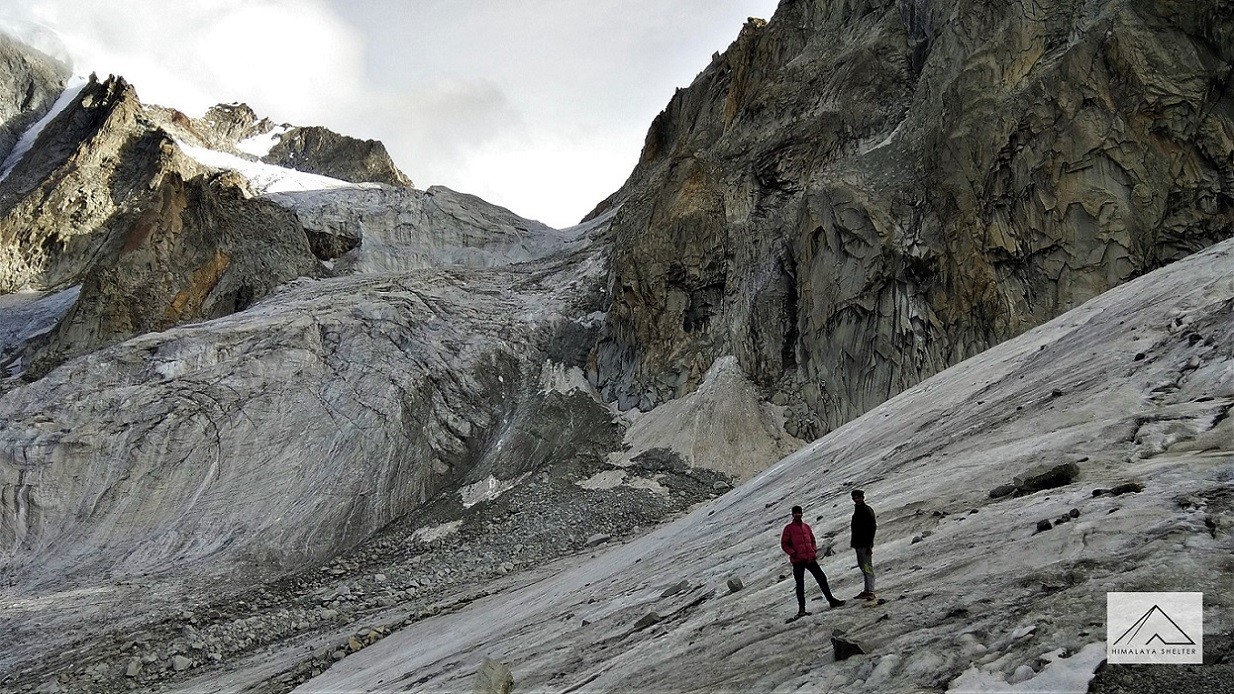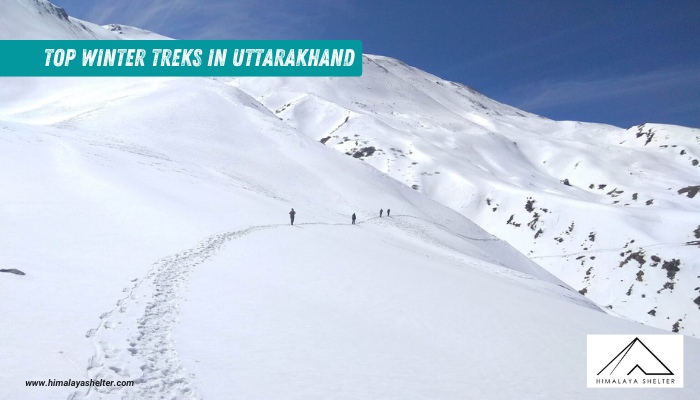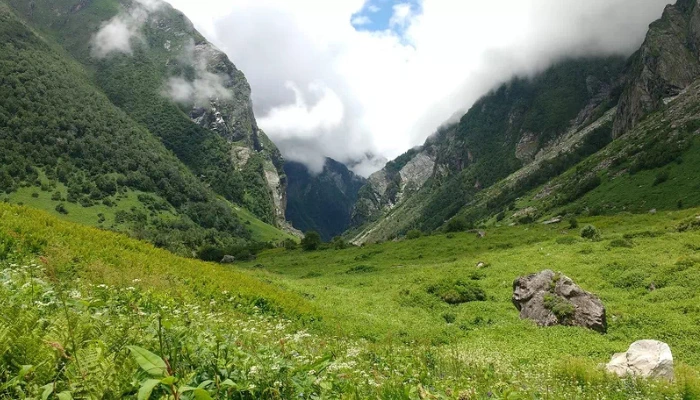
Kedar Dome Expedition
TREK DIFFICULTY
Difficult
TREK DURATION
25 Days
HIGHEST ALTITUDE
6832m (22,411 feet)
GROUP SIZE
12
TREK DISTANCE
40 Km
BASECAMP
Uttarakhand
BEST TIME
June to September
PICKUP POINT
Dehradun (Prince Chowk)
Kedar Dome Expedition
Starting the Kedar Dome expedition set up in the Gangotri ranges of the Garhwal Himalayas is a thrilling high-altitude expedition which does not require technical climbing skills. Sitting at a whopping altitude of 6999 meters this expedition is suits the climber seeking significant altitude gain. Beginning from Gangotri, the path moves through a variety of terrains that can be totally green with dense forests to snow covered glaciers. It is a perfect precursor for potential aspiring skiers preparing for the much steep peaks or those who wish to do ski-mountaineering. The first successful attempt was made by a Swiss team in 1947 simultaneously they were also successful in the Mt. Kedarnath.
The expedition includes mountaineering and high-altitude trekking, often undertaken by seasoned trekkers. It also passes through Gangotri National Park and offers views of peaks such as Bhagirathi I, II, III. The entire journey takes 10 to 15 days depending on the itinerary and attempting the summit.
The Kedar Dome expedition is not just an adventurous expedition, it holds great spiritual significance also. Located close to Gaumukh, the source of holy Ganga, it offers a fulfilling journey of thrills and inspiration.
History of Kedar Dome Expedition
Kedar Dome stands close to Kedarnath and Gaumukh region and is associated deeply with Lord Shiva. The name 'Kedar' comes from 'Kedarnath' which is one of the 12 sacred Jyotirlingas of Lord Shiva. Its dome shape is believed to be part of the divine landscape of Kedarnath. It is said that here Lord Shiva granted liberation to Pandavas from Mahabharata.
The nearby Gaumukh is also considered sacred for being the source of holy Ganga. Locals believe that in the region Lord Shiva controlled the intense flow of Ganga river in his matted locks so that Ganga could flow gently on earth.
According to some local Garhwali folklore, Kedar Dome was associated with weather omens: Shepherds believed that if the appearance of Kedar Dome was clear, there would be good grazing seasons while cloudy appearance meant early snowfall.
In the 20th century, the first time a Swiss team led by André Roch made the ascent on Kedar Dome. Since then Kedar Dome has become a popular non-technical 6,000+ m climb which has often served as a training ground for higher expeditions like Shivling or Bhagirathi peaks.
Highlights of the Kedar Dome Expedition
- Kedarnath Connection:
Kedar Dome trek lies close to Kedarnath which is very famous and one Jyotirlingas of Lord Shiva. For its proximity to sacred Kedarnath and Gaumukh, the source of Ganga, it also holds high spiritual significance. Kedar Dome is not only an expedition, it's a pilgrimage where every step feels blessed and heart feels fulfilled by the divine energy of Himalayas and Lord Shiva.
- Majestic Summit Views:
At a high altitude of around 6,831 m, Kedar Dome offers the stunning views of famous Himalayan peaks like Shivling, Bhagirathi and Meru. From its high peaks, trekkers can take the 360-degree views of Garhwal Himalayas, vast glaciers, beautiful valleys, snow ridges and other Himalayan phenomena.
- Adventurous & Rewarding:
Though Kedar Dome trek is counted as a challenging and difficult trek, it's very rewarding and soul-satisfying. Trekkers pass through snow moraines, icy slopes, steep ascents, rivers crossing, alpine meadows and rocky sections but all these physical challenges are balanced by pristine landscapes of Himalayas, overnight stays under starlit sky and spiritual vibrations.
- Rich Himalayan Flora and Fauna:
When trekking to the Himalayas, what could be more satisfying than watching the rare flora and fauna of Himalayas. In lower sections alpine flowers like primulas, blue poppies, Brahma Kamal (rare) bloom in summer and create an eye-catching backdrop. Also, spotting wildlife like tahr, snow pigeon and snow leopard (rare) will make your day.
- Glacial Beauty of the Gangotri:
Kedar Dome trek passes near the Gangotri glacier. Here trekkers are often stunned and mesmerised by seeing the shimmering ice walls, frozen streams and crevasses. The landscape changes constantly- from crystal clear water in daytime and mirror like ice at night. Watching this phenomenon gives an unforgettable experience of untouched Himalayan splendour.
Difficulty Level of Kedar Dome Expedition
Kedar Dome trek is considered a difficult and technically challenging trek in the Indian Himalayas. It is suitable for seasoned trekkers having high-altitude trekking experience. The elevation range of Kedar Dome trek is around 6,831 for which acclimatization is very crucial. This trek is not suitable for beginners, kids and families.
The terrain of Kedar Dome trek is a mix of dense forests, boulder-strewn paths, steep climbs, glacial moraines, crevassed snowfields and high mountain passes. Trekkers have to encounter unstable rocks, long icy stretches and perilous ridgelines. The trek takes 12 to 15 days to complete. Daily walking hours duration is from 5 to 10 hrs, often in challenging conditions.
One of the major challenges is navigating through high snowfields. Whiteouts and sudden weather changes can add other challenges. Night temperature can go below -15°C at higher camps and heavy rainfall and hailstorms can occur unexpectedly.
Due to the technical nature of the trek, support of an expert guide or joining a team is mandatory. Usage of equipment like oxygen cylinders, crampons, ropes, ice axes are essential, especially while moving above camp 2. River crossings and crevasse navigation demand technical help. Emergency evacuation is complicated and requires satellite communication due to no network coverage.
Overall, Kedar Dome trek is a challenging but rewarding trek that requires physical and mental endurance, high stamina and professional support.
Best Time to Visit the Kedar Dome Expedition
The best time to trek to Kedar Dome is from May to June and from September to early October. These windows offer the most favourable time, stable weather and manageable snow level.
- Mid-May to June
During this time, the trails are filled with snow bridges and melting glaciers but now can still be present. It adds some adventure but trails can be slushy. However, at lower camps, meadows are lush green and filled with blooming flowers. The sky is generally clear and visibility is good. Daytime temperature range goes between 2°C to 10°C. At night time it can dip to -10°C or below. Sudden snowfalls and white outs can happen anytime. Effects like rockfall or avalanches may occur due to temperature variations and terrain.
- September to Early October
This time landscapes come alive and fresh with more greenery after monsoon. Trails are dry but at higher altitudes, snow can still be present. The sky is clearer and mountain peaks like Meru, Shivling and Bhagirathi. Valleys glow with the golden hue of autumn. During this time, daytime temperature remains around 5°C to 10°C. At night time it is usually around 0°C or below. Try to complete your expedition by early October. The weather can be extremely snowy after this season.
Note: Avoid July to August due to heavy rainfall which makes trails slippery and prone to landslides. Similarly winters (November to April) are not suitable due to heavy snowfall and cold temperatures.
How to Reach the Kedar Dome Expedition
Kedar Dome is located near the famous Kedarnath region in Uttarakhand. To reach Kedar Dome, you can start your journey from Rishikesh or Dehradun which are well-connected by road, rail and air to major Indian cities.
From Rishikesh, you can take a bus or taxi to reach Uttarkashi. The road journey takes around 7–8 hrs. From Uttarkashi, you need to travel to Gangotri, the starting point of the trek, which takes about 4–5 hrs by road. Gangotri is a popular pilgrimage site, so basic facilities like guesthouses and shops are available here.
The trek to Kedar Dome begins from Gangotri and follows the trail towards Gaumukh, passing through Chirbasa and Bhojbasa. This part of the trek is moderately challenging and offers stunning views of the Bhagirathi peaks.
From Gaumukh, you proceed towards Tapovan, a beautiful high-altitude meadow known for its panoramic mountain views. From Tapovan, the route becomes more challenging, involving glacier travel and steep ascents. The path to Kedar Dome base camp crosses crevassed areas and requires technical climbing equipment such as ropes, crampons and ice axes.
Since Kedar Dome is a high-altitude expedition peak (6,831 m), it is not just a simple trek but a mountaineering climb. Climbers generally need prior experience in high-altitude trekking and basic mountaineering skills. It is recommended to go with a certified expedition team or trekking agency.
The Terrain Description of the Kedar Dome expedition:
- Starting Point: The expedition starts at Gangotri moving through lush forests, alpine pastures and then onward.
- Forest Trails: There are oak and pine trees in the early part of the expedition with paths that are often get marshy at some points.
- Alpine Meadows: Namely, in the regions of Tapovan and Chirbasa, there are much of majestic meadows and fields.
- Rocky Terrain: Part of the trail to Kirti Glacier and Base Camp contains rocky parts as well as glacier moraines—it is a challenging trail.
- Snow-Covered Areas: Snow can be present up to certain altitudes of the places. Trekking poles and crampons are to be used to provide some measure of sure-footedness and safety.
- Steep Ascents: The last phase to Kedar Dome has some strenuous climbing on the steep sides and occasionally, exposed faces. Preparation before the game and acclimatization should be done right.
- Descent: The descent through the woods and pastures is slightly less demanding in terms of the grade but the path is still quite tricky.
Equipment that One Needs for the Kedar Dome Expedition
| Gear in Backpack | Overview | |
| Food | Energy bars, nuts, dried fruits depending on their preparation, freeze-dried meals | |
| Water | | Hydration systems or water bottles; portable filters; or purification tablets. | |
| Bedding | An appropriately designed sleeping bag for harsh climate conditions and /or high-altitude travel | |
| Shelter | A medium to large tent suitable for use during the cold seasons and especially the snowy period. | |
| Clothing | Moisture wicking outer garments, insulating mid layers of fleece jackets and multiple layers of water proof jackets/ coats, head gear which include caps/ helmets paired with winter/ waterproof gloves. | |
| Cooking Kit | A foldable/ portable cook stove, stove fuel, and a set of minimal cooking requirements. | |
| Campsite/Camping Guide | This may include items that are appropriate for use in different weather conditions of different seasons. | |
| Essential or Survival Equipment | First Aid Kit, Emergency Blanket, Multi Tools & Fire-Starting kit. | |
| Navigation: | preferably maps, a compass or even a good Global positioning system device. | |
| Medications: | Pain killers, and medicines used in management of acute mountain sickness and personal medication. | |
| Flashlight: | Helmet-mounted or handheld lights for nighttime use | |
| Snow/Ice Clothing | Wear trekking poles, mitts, and neck gaiter to deal with snow/ice hurdles. |
Day 1: Arrive at Rishikesh / Dehradun → Drive to Uttarkashi (7–8 hrs) → Overnight stay.
Day 2: Drive Uttarkashi to Gangotri (4–5 hrs) → Acclimatization walk → Overnight in Gangotri.
Day 3: Road transportation from Uttarkashi to Gangotri
Day 4: We spend the day acclimatizing in Gangotri at 3,048 meters
Day 5: Gangotri to Chirbasa (3,548 m)
Day 6: Chirbasa to Bhojbasa (3,784 m)
Day 7: Bhojbasa to Tapova (4,420 m)
Day 8: Tapovan To Kirti Glacier Basecamp (4740m)
Day 9: Rest and Acclimatization Day
Day 10-18: Climbing Period, Summit push to Kedar Dome (6,831 m)
Day 19-20: Contingency Days → Weather Buffer
Day 21: Trek to Base Camp to Tapovan → Overnight stay.
Day 22: Trek from Tapovan to Chirbasa
Day 23: Trek from Chirbasa to Gangotri and Drive to Uttarkashi
Day 24: Shift from Uttarkashi to Dehradun by car. → Trip ends.
In Himalaya Shelter, we provide you with the option to customize your Kedar Dome trek experience. Whether you're an avid mountaineer, a spiritual seeker or a group of friends, you can opt for our personalized tailor-made expedition program. This customized program will be exclusively designed for you, taking into account your specific requirements for transportation, accommodation, meals, technical equipment and any other premium facilities you may need during the climb.
Starting from Dehradun (pick up point), the Kedar Dome trek passes through scenic destinations and challenging landscapes. Expedition is a mix of adventure and serenity.
Himalaya Shelter ensures your journey is safe and memorable with experienced local guides, technical support and all necessary permits. You can even request offbeat routes or sunrise hikes for a more immersive Himalayan experience. Moreover, no other participants will be added to your group. Choosing a customized program will enable you to enjoy your journey without any hesitation.
Day 1: Arrival in Dehradun
Begin your expedition in the city that is the starting point of all treks in the region, Dehradun. Ensure that you have all necessary equipment with you, get to know people you will be hiking with and prepare for the trip. Overnight in Dehradun.
Day 2: Dehradun to Uttarkashi 1110 meters by car
Drive: 190km roughly 8 hours
Uttarkashi can be reached through the eye-soothing beauty of the Shivalik ranges and the dense forest area of Uttarakhand. Overnight stay in Uttarkashi.
Day 3: Road transportation from Uttarkashi to Gangotri
Drive: 250km in 10 hours.
From there, I can proceed further to Gangotri which is a starting point for many Gangotri treks I plan to have. Some of the views to look out for are the views of the Himalayan foothills and the Bhagirathi River on the way. Overnight in Gangotri.
Day 4: We spend the day acclimatizing in Gangotri at 3,048 meters
Rest and Acclimatize
Spend this day in propitiating the change in altitude that has taken place in Gangotri. Take a walk around the sacred place and be prepared for the further days which will mostly be devoted to trekking. Overnight in Gangotri.
Day 5: Gangotri to Chirbasa (3,548 m)
Trek: kilometres, roughly 6-7 hours
Begin your journey through beautiful oak and pine trees. Get to Chirbasa, your campsite by the river. Pitch your tents and just relax and enjoy being in the middle of nature. Overnight in tents.
Day 6: Chirbasa to Bhojbasa (3,784 m)
Trek: An 8 kilometre distance rucking taking about 4-5 hours but the time mainly depends on the terrain of the area to be covered.
This is another day which is considered to be a long hiking day passing through Chirbasa and reaching Bhojbasa which is placed at a height of 3,784 meters.
Continue to Bhojbasa going through difficult terrains and also having views of large mountains. Once commonly known as ‘tent up,’ you have a bit of free time you might as well get some shut-eye. Overnight in tents.
Day 7: Bhojbasa to Tapova (4,420 m)
Trek: 10km, that is approximated to 5-6 hours.
This particular day moves trek from Bhojbasa to Tapovan which is 11 kilometers long in the height of 4,420 meter.
Rise up to Tapovan, a beautiful alpine pasture situated at high altitude accompanied with the awe-inspiring views of the Gangotri mountains. Cross rocky paths and glaciers moraines from time to time. Overnight in tents.
Day 8: Tapovan To Kirti Glacier Basecamp (4740m)
Trek: 8 kilometres; 4-5 hours.
Toward Kirti Glacier, start from ground zero, Base Camp (BC). Walk through especially narrow terrains of glaciers and rocky slopes and Savor the beauty from the base camp. Overnight in tents.
Day 9: Rest and Acclimatization Day
Rest and Gear Check
Rest at Base Camp, rest further and pack properly as the climbing equipment will be required. Prepare for what is coming next. Overnight in tents.
Day 10: Day 10-18: Climbing Period
Expedition period when the two camps are established above base Camp C1 (5,300 m): Establish Camp 1 because of the low altitude to facilitate in the adjustment to higher altitude.
C2 (6,000 m): Descend to Camp 2 for the final preparation to make the last push to the top.
Summit Push: Climb Kedar Dome and go back to the Base Camp.
Day 11: Day 19-20: Contingency Days
Weather Buffer
These reserved days make for the contingency in case of a probable break in the weather or in case of some other form of delay.
Day 12: Day 21- Trek to Base Camp to Tapovan
Descent: Around 8km that translates to about 5-6 hours.
Descend back to Tapovan from where one gets to see different views that one has not for the most part seen before.
Day 13: Day 22: Trek from Tapovan to Chirbasa
Descent: 13km, up to 6 -7 hours
With this, you proceed to have your descent to Chirbasa while taking time to view the changing profile along the way.
Day 14: Day 23: Trek from Chirbasa to Gangotri and Drive to Uttarkashi
Trek: 13km or roughly about 6-7 hours of walking time and yes logical as it is a transportation mode for locals.
Drive: 250km that is roughly 10 hours.
Retrace your route and drive back to Gangotri before heading back to Uttarkashi. The Long but Unbelievable Journey is over and take the time, Savor a restful night.
Day 15: Day 24: shift from Uttarkashi to Dehradun by car.
Drive: 190 km or 7-8 hours
Journey back to Dehradun. After the successful completion of your Kedar Dome trek you will be saying bye to all the fellow trekkers and guides.
Our treks are specially designed by the experienced team at Himalaya Shelter, taking you on an adventure of a lifetime all while making you connect not only with the bountiful nature but also with yourself and with others on the trek with you creating wonderful memories which will last you a lifetime. All Himalaya Shelter treks are guided by experienced Trekkers having vast knowledge and experience of the region, providing with insightful information and stories pertaining to the region’s flora and fauna and the history of the region whilst the trek. It is safe to say that on successfully completing the trek, one will gain tremendous insight and experience along with lifetime memories.
Kedar Dome Expedition Inclusions
- Transport support from Dehradun to Dehradun (Pick-up location: Prince Chowk, near Dehradun Railway Station Pick-up Time: Around 7:30 am )
- Accommodation – At Base Camp, stay at a local homestay or guest house for one night each, which will give you an insight into the authentic lifestyle of the locals.( INR 5000 per person extra for single sharing throughout the trek )
On Trek stay in a 2-person Vango Halo Pro/A-Shape tent, which is to be shared by two trekkers, built to withstand extreme weather conditions and at the same time making you comfortable after a hard day’s trek. - Camping Equipment – specially designed sleeping bags that can withstand harsh weather conditions, foam mattresses. Other safety gear like microspikes, gaiters, an ice axe, and helmets will be provided.
- Medical Kit – our team will be equipped with an extensive medical kit, which our team is trained and experienced to use. Oxygen cylinders are used after they are thoroughly inspected throughout the Trek. Even campsites have large oxygen cylinders as backups.
- Permission - Forest entry charges for Indian nationals (Additional charges will be applicable for international tourists)
- Meals – Breakfast, packed lunch (on trek days), evening snacks, and dinner will be served. A hearty, delicious, and nutrition-filled Veg meals with egg preparation will be provided throughout the trek. (Jain and Vegan Food can also be arranged on prior notification.)There will be a dedicated Kitchen Tent along with a dining tent, which will have a dining table too.
- Our Team – A highly experienced and AMC-certified Trek Leader who will help ensure that the entire trek goes smoothly and safely while navigating the challenging conditions during the trek, and is skilled enough to navigate any medical emergency that can arise during the trek. Local and route Guides who are well-versed with the region and provide an in-depth insight into the local customs and knowledge of the flora and fauna endemic to the region. A dedicated Kitchen staff, which includes a Cook, a helper, and other support staff. There will also be porters and mules to carry common equipment.
- Cloakroom - We have a cloakroom facility available for extra luggage. Every trekker is permitted to leave their luggage behind at no charge.
Kedar Dome Expedition Exclusions
- Personal expenses like tips, personal medicines, phone calls etc.
- Travel Expenses - Travel expenses from your hometown to the mentioned Pick-Up Point are not included in the trek fee.
From the scheduled pick-up spot to the base camp, we have our own fleet of vehicles like Bolero, Innova, Dezire, or Tempo Traveler (12-seater). This is be shared by trekkers for a pre-decided amount. All vehicles are non-AC. - Personal Equipment - Any personal gear like jackets, shoes, cutlery, or backpacks are not included in the trek fee. We recommend renting them from our Rental Store for an affordable fee. This can be pre-arranged to avoid last-minute hang-ups.
- Offloading - We encourage carrying your backpack to get into the true spirit of trekking. However, if needed, you can opt to offload your personal luggage of up to 12 kgs for an additional cost of INR 500 per bag per day.
- Trek Insurance - A mandatory trek insurance fee is charged in addition to your trek fee. Since most medical insurance doesn’t cover adventure activities, trek insurance offers essential coverage, enhancing your safety without a significant financial burden.
- Buffer day on the trek - We have kept a buffer day on the trek to account for any weather-related delay. If this is utilized, you will need to pay an extra amount to your trek leader.
- Anything apart from inclusions
- Please carry a lunch box for a packed lunch/breakfast to avoid using polythene and Aluminium foil.
Keeping the Himalayas clean is our own responsibility. Reduce the use of Plastic when you are in the abode of the Sacred Himalaya.
In the Garhwal Himalayas, Uttarakhand, near Kedarnath and Gaumukh.
6,831 meters (22,411 feet).
It is an expedition peak requiring mountaineering skills.
Uttarkashi is the nearest major town.
From Gangotri, Uttarakhand.
Around 12–15 days.
No, it is suitable for experienced trekkers and climbers.
Around 4,800 meters (Kedar Kharak area).
Shivling, Bhagirathi peaks, Meru and other Garhwal Himalayan peaks.
Drive from Rishikesh/Dehradun to Uttarkashi, then to Gangotri by road.
Read More on Kedar Dome Expedition
Photo Gallery

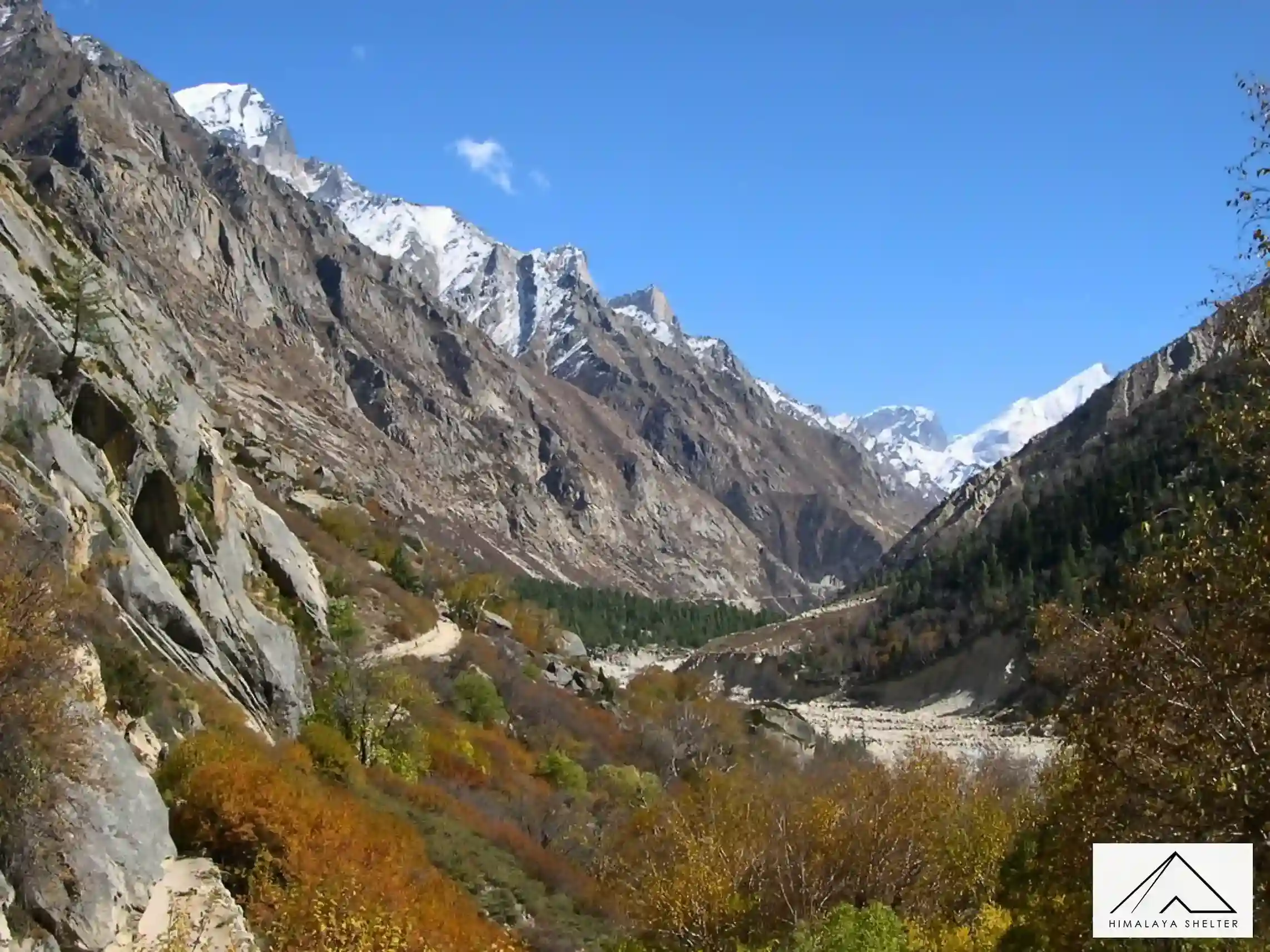
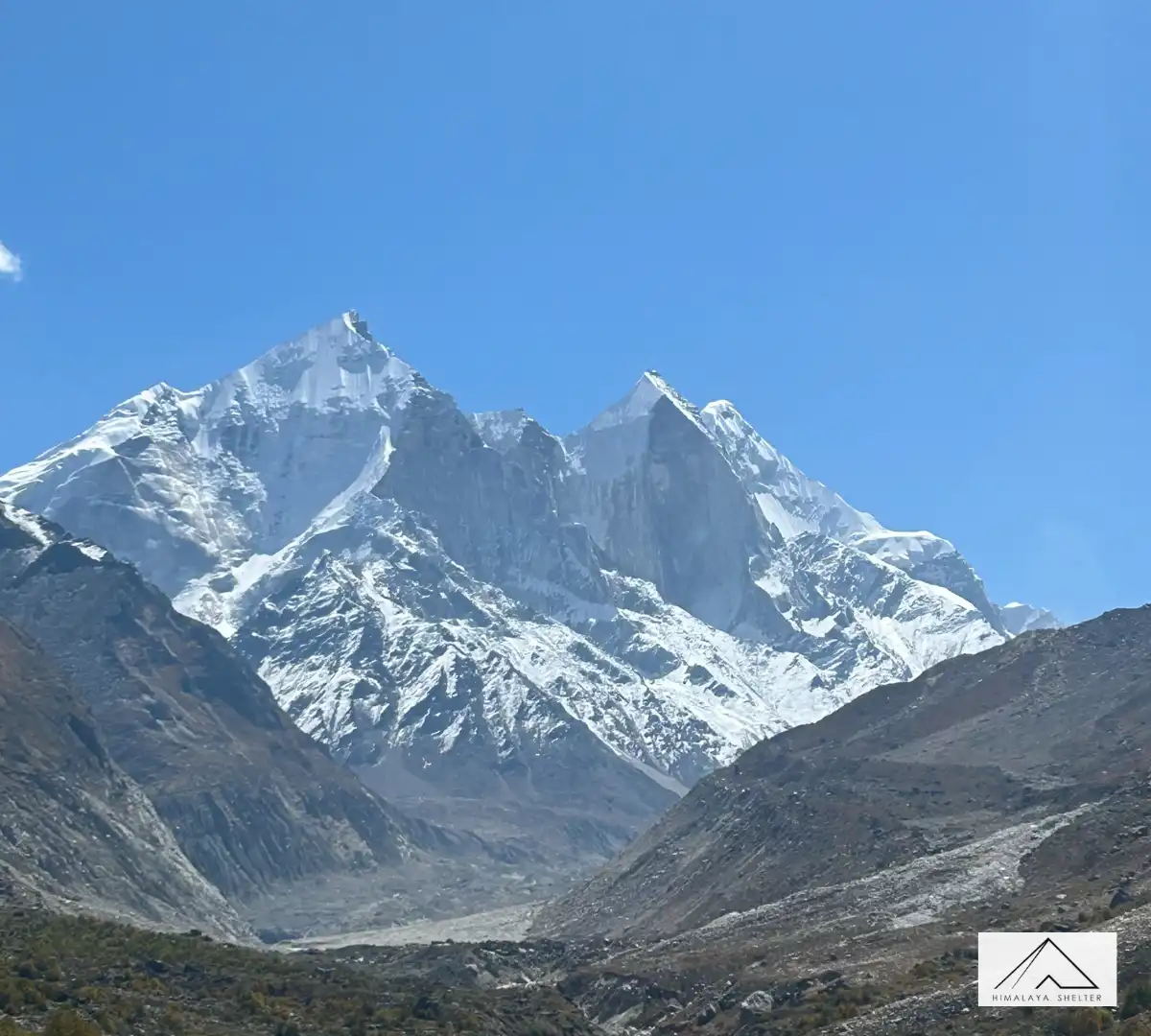
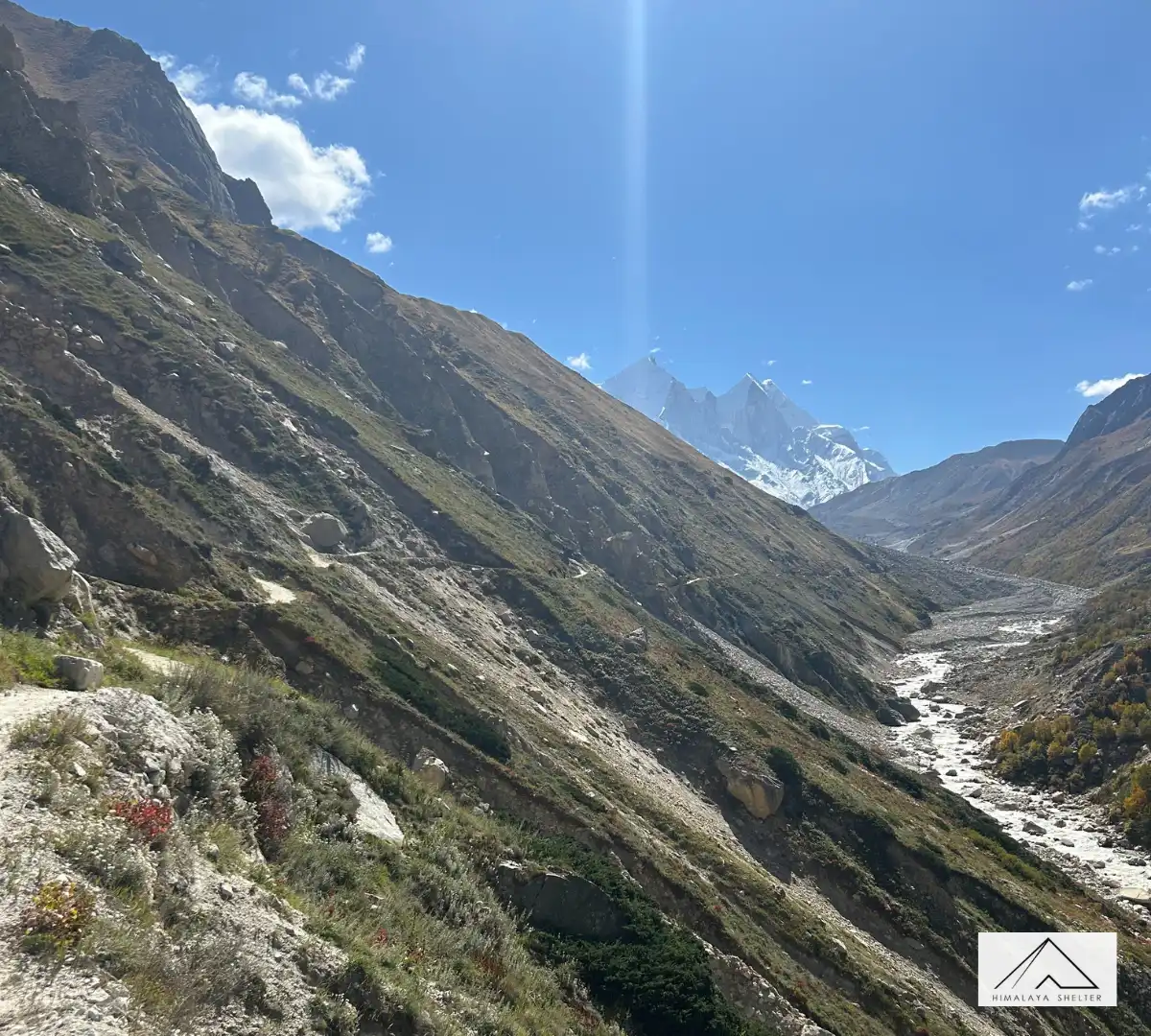
Treks by Categories
Treks By Month

Treks By Experience







